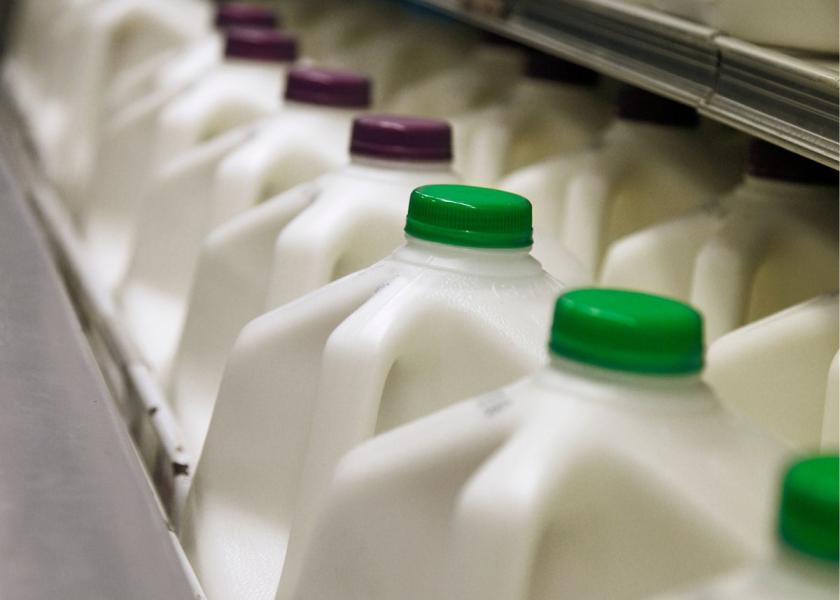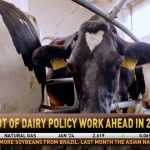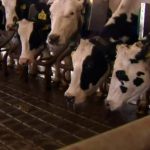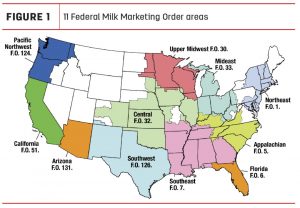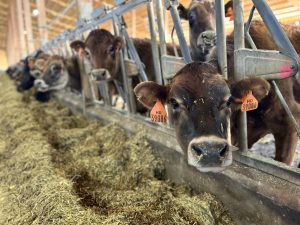
Milk income has been substantially lower this year than 2022. There had been hope that the low milk prices of this summer would be a bottom and that prices would cycle back up again. Well, they did that to some extent with Class IV prices far exceeding Class III. Butter price found exceptional buying interest moving to new highs into early October before the reality of supply and demand came back into focus. Cheese prices moved moderately higher for a short period. Class IV prices have exceeded Class III prices all this year. In fact, Class IV prices have been higher than Class III since October 2021. Historically, Class III has been higher, or prices have been very close to each other.
Since early October, butter price fell apart falling faster than it increased. Cheese prices came under pressure a bit later putting pressure on the market at a time when demand is generally strong, and prices hold at higher levels. Even though butter price fell substantially, it remains over $1.00 higher than cheese prices. This has Class IV price and futures running over $3.00 above Class III for the next three months. Class IV futures maintain a premium over Class III futures throughout the entire next year.
Unfortunately, the current direction of underlying cash prices may result in Class III price retesting the levels of July 2023 which had been the lowest price since May 2020. The weakness of grain and hay prices may not provide much help from the Dairy Margin Coverage (DMC) program with income over feed not as low as it had been throughout much of 2023. The sign up for the DMC program has yet to be announced. Once announced, it will be retroactive to the beginning of the year and something that we have seen before. The extension of the current farm bill means that the level of 5 million pounds of milk eligible for income over feed coverage up to $9.50 per cwt will remain in place for another year. There had been some discussion over raising the cap to 7 million pounds but that may not take place now until a new farm bill is adopted.
The country is not awash in milk as plants are handling current milk production easily. Spot milk prices are much better than a year ago with prices running near class in some areas to $5.00 below class even though schools are closed, and more milk is moving to manufacturing. The pressure on prices is coming from manufacturers wanting to move supply as quickly as possible at whatever price they can. They are not willing to hold and pay storage on products that show limited upside price potential for the foreseeable future. With the current interest rates and higher storage costs, they would end up losing money.
Domestic demand has been good, but not good enough. International demand has been struggling as demand in the world markets has been lower. Exports on a milk solids equivalent basis declined 6.6 percent in October which is the nineth consecutive month of year-over-year decline. There were some products that did very well but that was not enough to offset the declines of other products. Slower exports have been an anchor on the potential for dairy product prices. Global inflation and slow economic growth have limited overall demand.
Robin Schmahl is a commodity broker with AgDairy, the dairy division of John Stewart & Associates Inc. (JSA). JSA is a full-service commodity brokerage firm based out of St. Joseph, MO. Robin’s office is located in Elkhart Lake, Wisconsin. Robin may be reached at 877-256-3253 or through the website www.agdairy.com.
The thoughts expressed and the basic data from which they are drawn are believed to be reliable but cannot be guaranteed. Any opinions expressed herein are subject to change without notice. Hypothetical or simulated performance results have certain inherent limitations. Simulated results do not represent actual trading. Simulated trading programs are subject to the benefit of hindsight. No representation is being made that any account will or is likely to achieve profits or losses similar to those shown. There is risk of loss in trading commodity futures and options on futures. It may not be suitable for everyone. This material has been prepared by an employee or agent of JSA and is in the nature of a solicitation. By accepting this communication, you acknowledge and agree that you are not, and will not rely solely on this communication for making trading decisions.
